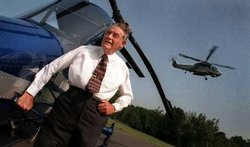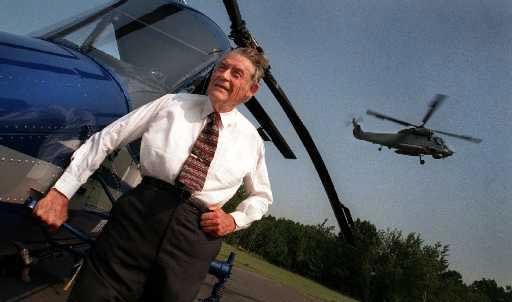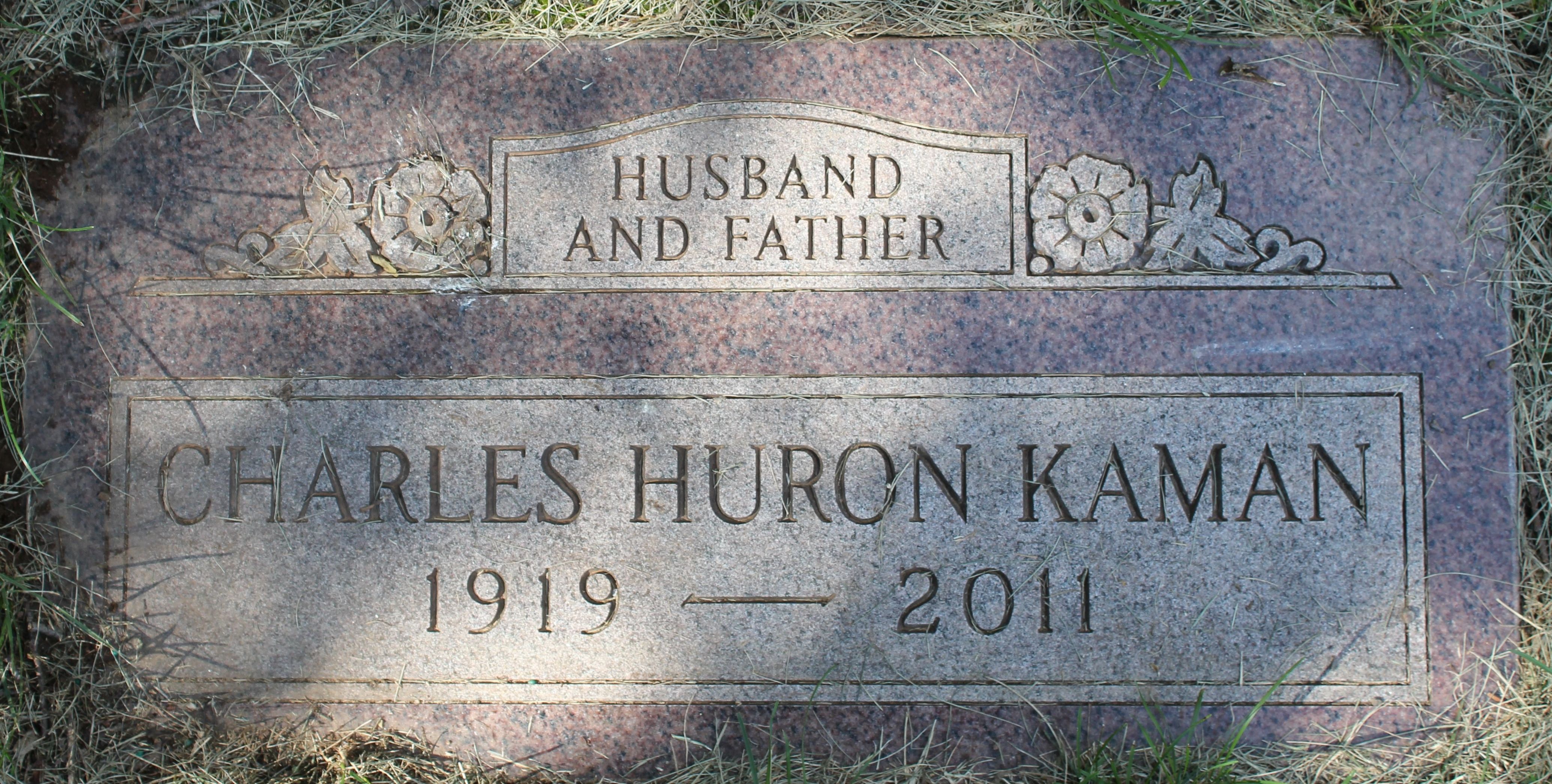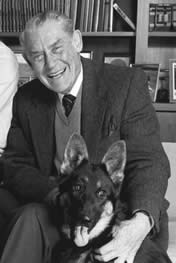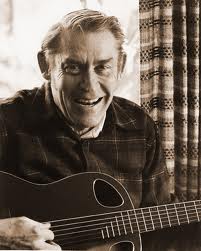In 1940 Kaman began working as an aerodynamicist with renowned helicopter designer Igor Sikorsky. Soon, however, Kaman was coming up with innovative ideas of his own, among them a way to make helicopters easier to fly. When Kaman entered the fledgling business of vertical flight, helicopters were unstable and difficult to fly. He developed a new concept of rotor control based on "servo-flaps." These small ailerons or flaps were added to the edges of the rotor blades to improve stability. He also proposed intermeshing rotors, which would increase lift while eliminating the tail rotor. In 1945, he decided to strike out on his own, and with $2,000 invested by two friends and some basic equipment, he founded what is today Kaman Corporation, in Bloomfield, Connecticut.
January 1947 marked the first flight of Kaman's first helicopter, the K-125, equipped with his patented servo-flap controlled rotor. In 1951, Kaman introduced the K-225, the first helicopter powered by a gas turbine. The new engine enhanced the performance of the helicopter while making it safer, more reliable and easier to maintain. Three years later, he introduced the first twin-turbine helicopter, followed by the first remote controlled helicopter in 1957.
With a reputation for quality and performance, Kaman helicopters found many applications in the U. S. Navy and Air Force. Kaman's H-43 Husky flew more rescue missions during the Korean and Vietnam wars than all other helicopters combined. The Husky was the only military helicopter to serve throughout its service life with no loss of life or accidents attributed to its design. The company's SH-2 Seasprite multi-mission naval helicopter has accumulated more than one million flight hours in service.
A recent innovation was the K-MAX "aerial truck" introduced in 1994. The K-MAX is the only helicopter designed specifically for highly repetitive heavy lift applications, including logging, fire fighting, oil and gas exploration, construction and ship replenishment.
In the end, Charlie Kaman was all about human potential. Of all of his technical accomplishments, he was most proud of the more than 15,000 lives that Kaman helicopters were estimated to have saved in rescue missions over the second half of the 20th century.
As a humanitarian, he has helped to bring freedom and independence to hundreds of visually impaired people through the Fidelco Guide Dog Foundation that he and wife, Roberta, founded in the 1960's. In addition to founding Fidelco, they also were successful in breeding a German Shepherd of outstanding temperament, ideally suited to the constant rigors of serving the blind day and night.
As an Inventor, Kaman was a fan of the guitar and in 1966 he founded Ovation Instruments. The company would become the Ovation Guitar Company, he developed an acoustic guitar using aerospace composite materials, it features a rounded back design.
Charles Kaman has been the recipient of many honors and distinctions, including the National Aeronautical Society's Wright Brothers Award Trophy(awarded in 1997), the National Medal of Technology(presented to him by President Clinton in 1996), and the U.S. Department of Defense Distinguished Public Service Medal. He is an inductee into the Hall of Honor of the National Museum of Naval Aviation and is an Honorary Fellow of the Royal Aeronautical Society.
In 1940 Kaman began working as an aerodynamicist with renowned helicopter designer Igor Sikorsky. Soon, however, Kaman was coming up with innovative ideas of his own, among them a way to make helicopters easier to fly. When Kaman entered the fledgling business of vertical flight, helicopters were unstable and difficult to fly. He developed a new concept of rotor control based on "servo-flaps." These small ailerons or flaps were added to the edges of the rotor blades to improve stability. He also proposed intermeshing rotors, which would increase lift while eliminating the tail rotor. In 1945, he decided to strike out on his own, and with $2,000 invested by two friends and some basic equipment, he founded what is today Kaman Corporation, in Bloomfield, Connecticut.
January 1947 marked the first flight of Kaman's first helicopter, the K-125, equipped with his patented servo-flap controlled rotor. In 1951, Kaman introduced the K-225, the first helicopter powered by a gas turbine. The new engine enhanced the performance of the helicopter while making it safer, more reliable and easier to maintain. Three years later, he introduced the first twin-turbine helicopter, followed by the first remote controlled helicopter in 1957.
With a reputation for quality and performance, Kaman helicopters found many applications in the U. S. Navy and Air Force. Kaman's H-43 Husky flew more rescue missions during the Korean and Vietnam wars than all other helicopters combined. The Husky was the only military helicopter to serve throughout its service life with no loss of life or accidents attributed to its design. The company's SH-2 Seasprite multi-mission naval helicopter has accumulated more than one million flight hours in service.
A recent innovation was the K-MAX "aerial truck" introduced in 1994. The K-MAX is the only helicopter designed specifically for highly repetitive heavy lift applications, including logging, fire fighting, oil and gas exploration, construction and ship replenishment.
In the end, Charlie Kaman was all about human potential. Of all of his technical accomplishments, he was most proud of the more than 15,000 lives that Kaman helicopters were estimated to have saved in rescue missions over the second half of the 20th century.
As a humanitarian, he has helped to bring freedom and independence to hundreds of visually impaired people through the Fidelco Guide Dog Foundation that he and wife, Roberta, founded in the 1960's. In addition to founding Fidelco, they also were successful in breeding a German Shepherd of outstanding temperament, ideally suited to the constant rigors of serving the blind day and night.
As an Inventor, Kaman was a fan of the guitar and in 1966 he founded Ovation Instruments. The company would become the Ovation Guitar Company, he developed an acoustic guitar using aerospace composite materials, it features a rounded back design.
Charles Kaman has been the recipient of many honors and distinctions, including the National Aeronautical Society's Wright Brothers Award Trophy(awarded in 1997), the National Medal of Technology(presented to him by President Clinton in 1996), and the U.S. Department of Defense Distinguished Public Service Medal. He is an inductee into the Hall of Honor of the National Museum of Naval Aviation and is an Honorary Fellow of the Royal Aeronautical Society.
Family Members
Advertisement
See more Kaman memorials in:
Explore more
Sponsored by Ancestry
Advertisement
